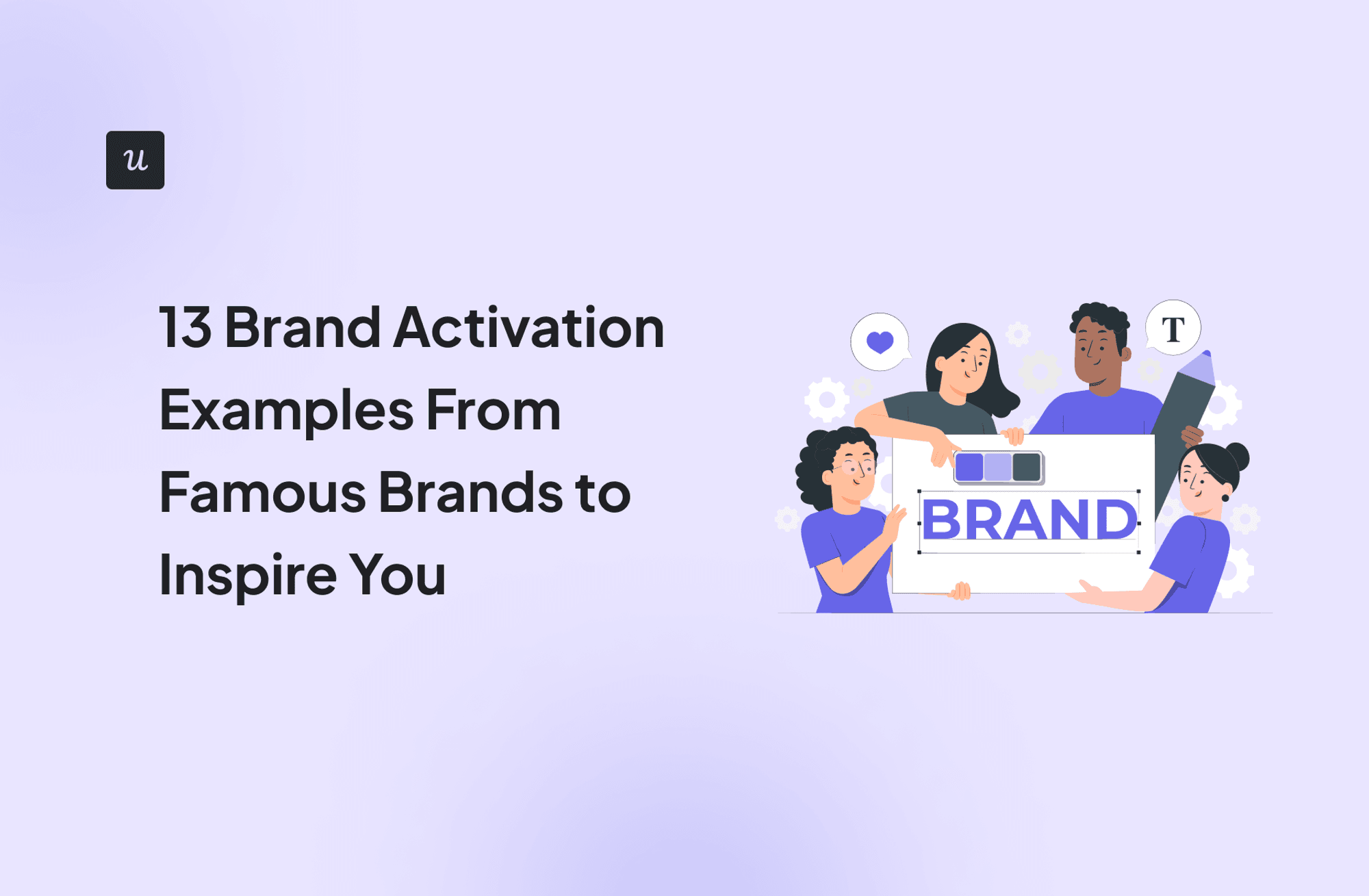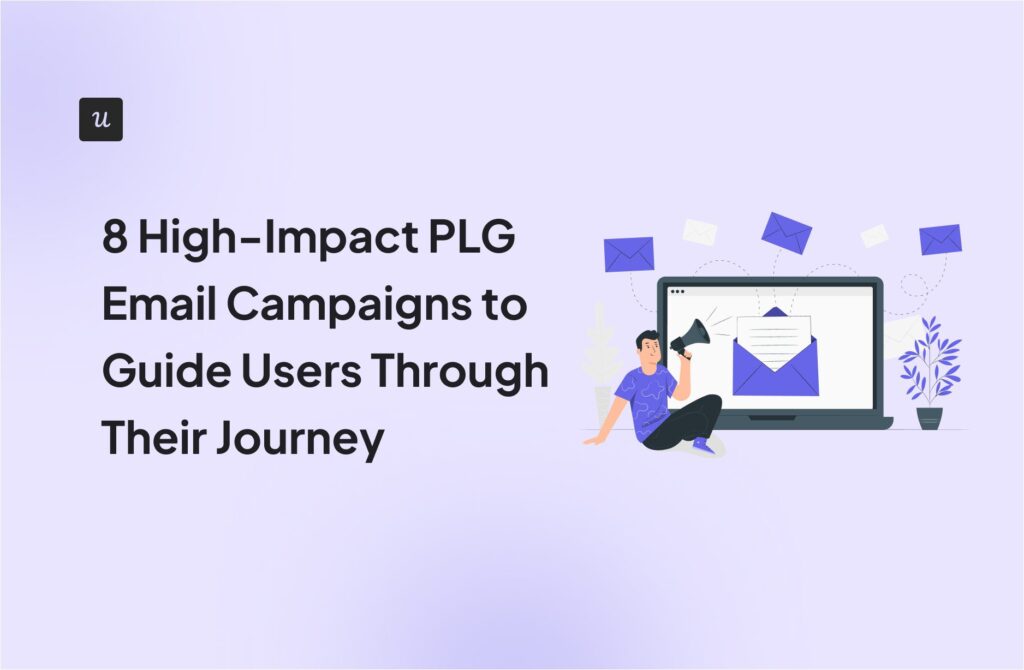
Get The Insights!
The fastest way to learn about Product Growth, Management & Trends.
What is brand activation?
Brand activation is the process of forging an emotional connection with your target audience through interactive events and experiences.
It goes beyond traditional advertising to influence people and emotionally connect them with your brand.
Why is brand activation important?
Brand activation occurs in a variety of ways, providing the target audience with a new brand experience. The unique experience it provides benefits your business in multiple ways, including:
- Emotional connection: Brand activation endears the audience to your brand. It captures their attention on a deep level, fostering trust and loyalty.
- Improved brand awareness: Unique, interactive experiences get people buzzing. People love to document and post about them. By making your experiences shareable, you improve your brand’s reach.
- Reduced costs: Because it is often cheaper than traditional advertising, brand activation reduces the cost of your marketing campaigns and improves your return on investment.
- Differentiation: Inventive and engaging experiences like a well-designed interactive product tour help you stand out from the competition by showcasing your brand personality and values in a unique and memorable way.
Types of Brand Activation Campaigns
There are many ways to activate your brand, each impacting the brand activation ideas and strategies you can work with. Consider a few popular examples:
- Experiential marketing: Experiential marketing campaigns immerse consumers in unique experiences and connect them to your core brand principles. For instance, you can create a virtual reality experience that transports users to the heart of your product story.
- Digital marketing: Target potential customers online by attracting them to your online marketplace or website. For example, you can leverage social media to create interactive contests and challenges that drive engagement.
- Guerilla marketing: Guerrilla marketing uses unconventional and novel methods to attract interest in your brand and boost sales. You can use viral messaging, for example, to force customers to pay attention to your brand and ignore other brands.
- Word-of-mouth marketing: Word-of-mouth marketing is a viral marketing strategy that relies on customers sharing their product experience with others. For instance, you can induce customers to share their positive experiences with your product on social media.
Regardless of your preferred approach, the type of brand activation campaign you choose should match your product’s use cases and audience demography. How so?
How to create a successful brand activation strategy
To create the right buzz around your company or product, you need an effective brand activation strategy; one that considers the needs of your brand and its users.
- Step 1: Define your value proposition: To create a successful brand activation strategy, you first need to understand the value your product brings to the table and then create messaging that aligns with it.
- Step 2: Identify your target audience: Understand your prospective customers’ demographics, interests, and needs. This will enable you to tailor your messaging to their specific needs.
- Step 3: Make a SWOT analysis: Your goal is to determine your brand’s strengths, weaknesses, opportunities, and threats. This should help you identify the best approach for your brand activation campaign. If finance is a problem, for example, you can opt for a virtual event or creative booth instead of an elaborate media campaign.
- Step 4: Decide on the acquisition channels: From traditional media channels like print and television to online channels like social media and influencer marketing, various options exist for attracting people to your brand activation campaigns. So, ensure you choose a channel that fits your audience and budget.
- Step 5: Brainstorm brand activation campaign ideas with your team: Once you’ve decided on the “who,” “why,” and “how” of your campaign, you can now focus on the “what.” This step builds on the information from the previous steps to bring your campaign to life.
13 great brand activation examples
Thankfully, with several successful brand activations in SaaS, you don’t have to go too far in search of brand activation ideas. Consider 13 brand activation examples to aid your ideation process.
1. Userpilot hosts industry webinars to generate brand awareness
One way Userpilot has successfully generated brand awareness is through its regularly hosted industry webinars.
As a product growth brand, Userpilot’s webinars discuss everything from product analytics to SaaS product metrics, user onboarding best practices, and user feedback techniques.
Through these webinars, Userpilot imparts knowledge that improves the work quality of its target audience. This direct interaction also gives the brand a human face, making it more personable and trustworthy.

2. HubSpot implements certification programs to drive brand activation
Similar to the above, HubSpot offers free educational courses for inbound marketing training. All of these courses are paired with an industry-recognizable certificate that makes them attractive.
Once a user starts taking any of these courses, they experience the power and versatility of HubSpot’s CRM and marketing platform. They also get a badge they can flaunt upon completion of the course.
HubSpot, thus, employs the hook model to attract potential users. The value they deliver positions them as industry thought leaders while giving new users a chance to learn about their products.

3. Ahrefs uses video marketing to reach relevant audiences
Thanks to the popularity and sheer size of platforms like YouTube and TikTok, video marketing campaigns are hotbeds for customer acquisition.
Ahrefs perfectly takes advantage of this opportunity on YouTube. They create how-to and educational videos that teach the audience something new and introduce their product solutions.
Using videos like these, Ahrefs is able to build trust and authority and attract potential customers.

4. Dropbox invests in customer loyalty programs to drive word-of-mouth
Dropbox’ “Refer a Friend” campaign is an ongoing campaign that rewards loyalty and incentivizes existing users to promote the brand.
This clever approach to word-of-mouth marketing turns users into marketers by offering free storage space (up to 32 GB!) for both the referrer and the referred user.
Dropbox, thus, benefits from the power of social proof to boost its brand visibility, build emotional connections, and increase brand loyalty.

5. Calendly creates growth loops to improve brand awareness
Growth loops are self-reinforcing systems where current actions act as triggers for future events and vice-versa. You can implement a growth loop to drive customer acquisition, engagement, or even retention.
There are many ways to create growth loops, such as the Dropbox referral example above, user-generated content campaigns, and more.
Calendly has managed to create a perpetual loop by adding its brand labels to the free meeting links its users share with others. Every usage of Calendly’s service, thus, becomes a promotion of its brand.

6. Userpilot showcases brand values on Product Hunt to attract like-minded people
Yet another way Userpilot drives brand activation is through its campaigns on Product Hunt.
With over 5 million visitors per month, Product Hunt is a buzzing community of techies and digital product lovers. It is, thus, a fertile hunting ground for website visitors, app downloads, etc.
By including Product Hunt campaigns in its product launch plan, Userpilot directly reaches those who need its product the most – product managers.

7. Bynder triggers product demos for website visitors to drive brand activation
Product demos showcase a product through a visual demonstration of how the product works. It is designed to provide a general overview of the product to boost engagement.
Product demos are undoubtedly one of the best brand activation examples, and Bynder uses them expertly to improve conversions.
Once a user signs up for a free trial, Bynder presents a 3-minute tutorial that highlights the product’s most important features and gets the user going. The goal? Boost engagement and drive conversion!

8. Slack drives brand activations via social media engagement
Slack quickly became everyone’s favorite workspace, thanks to its positioning as a relaxed and friendly workspace. With GIFs, emojis, and more, Slack creates an engaging environment for its users.
Slack employs a variety of methods to reach potential users and engage with them. One of these is social media – which advertises with a simple but effective message: “Making work simpler, more pleasant, and more productive.”

9. Userpilot uses content marketing to increase brand awareness
A subset of the digital marketing technique, content marketing is a powerful tool for building brand awareness. It involves creating content that resonates with your audience and provides them value.
From its inception, Userpilot has relied heavily on content marketing to generate organic traffic. It combines a regularly updated blog with a targeted newsletter for product analysts and managers.
By consistently putting out helpful, educational content on user onboarding, product marketing, user engagement, and SaaS growth strategies, Userpilot is able to attract the right audience.

10. Attlasian’s free trials open an opportunity for a brand activation event
Free trials are one of the less obvious but hyper-effective brand activation examples. Think of it as walking the streets giving out free samples of your new product to strangers who wouldn’t risk buying it otherwise.
When properly implemented, they allow these “strangers” to experience the full spectrum of your product and decide if they’d like to pay for it.
Atlassian uses this brand activation strategy excellently, offering its entire suite of products up for a limited-time free trial. This builds interest in the product, converting leads into paying customers.

11. Tableau builds trust with potential customers on software review platforms
Tableau harnesses the power of word-of-mouth marketing a little differently from Dropbox. Instead of direct referrals, it aims to build trust through social proof.
To do this, it encourages and incentivizes happy customers to leave public reviews. This public endorsement acts as public proof of its effectiveness, encouraging others to take the plunge.

12. Spotify partners with a non-competing brand with a similar audience
In 2019, two tech giants – Spotify and Uber – came together for a collaborative brand activation campaign. The idea was to elevate the in-car experience by allowing passengers to control the music during Uber rides.
The result was a wider audience and more leads for both brands. On the one hand, Uber solved a problem for customers (music control during otherwise frustrating commutes to enhance the ride experience).
On the other hand, Spotify cemented its position as a reliable brand designed to make life easier.

13. Starbucks leveraged influencer marketing to promote its “Sparkle Shop”
One way to harness the power of social media is through influencer marketing. Starbucks used this excellently when promoting their new line of Teavana teas.
They opened a pop-up store in Toronto, which they labeled as a “Sparkle Shop.” Then, they partnered with a glitter-loving YouTube influencer to promote it.

Conclusion
The big takeaway from these brand activation examples is that there are multiple approaches to brand activation. Simply find the approach that fits your brand and budget, and you’re good to go.
Ready to leverage your product to drive activation through webinar invites, in-app demos/tutorial videos, and more? Book a Userpilot demo today to learn how it can help you!







